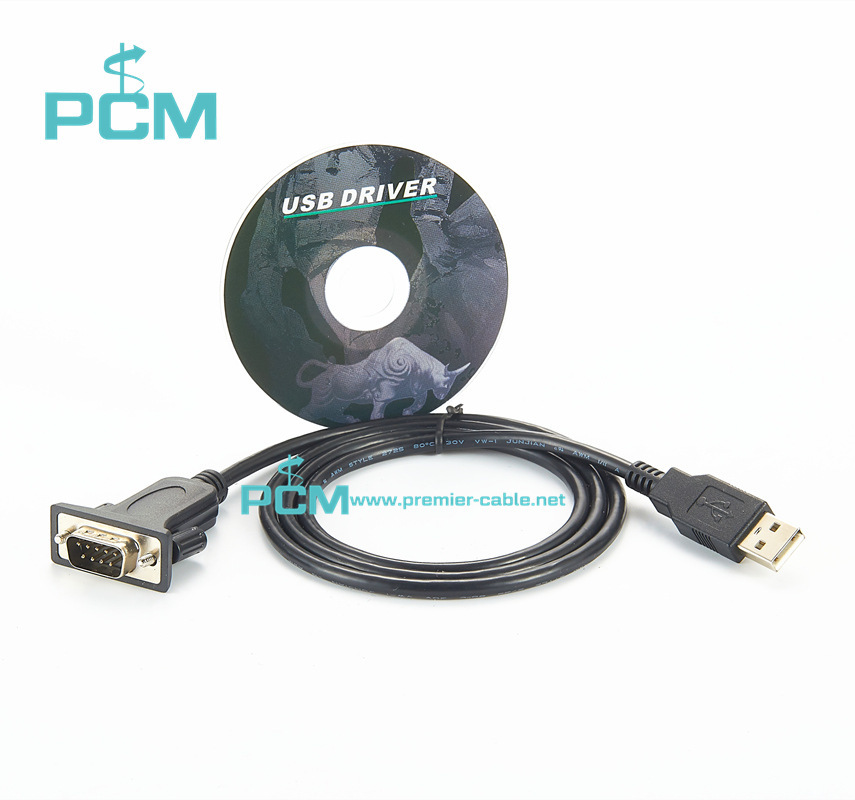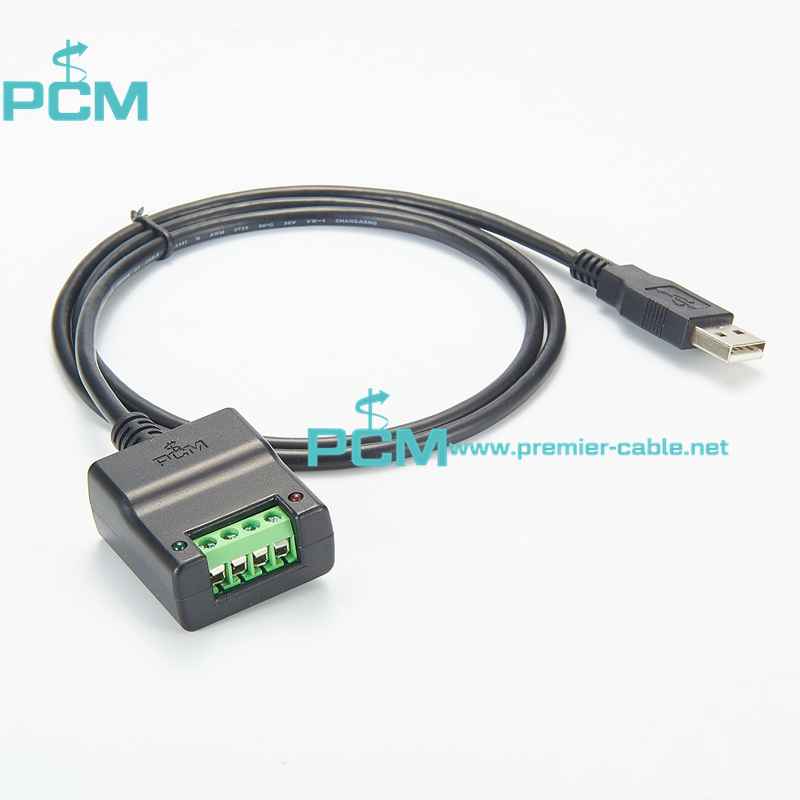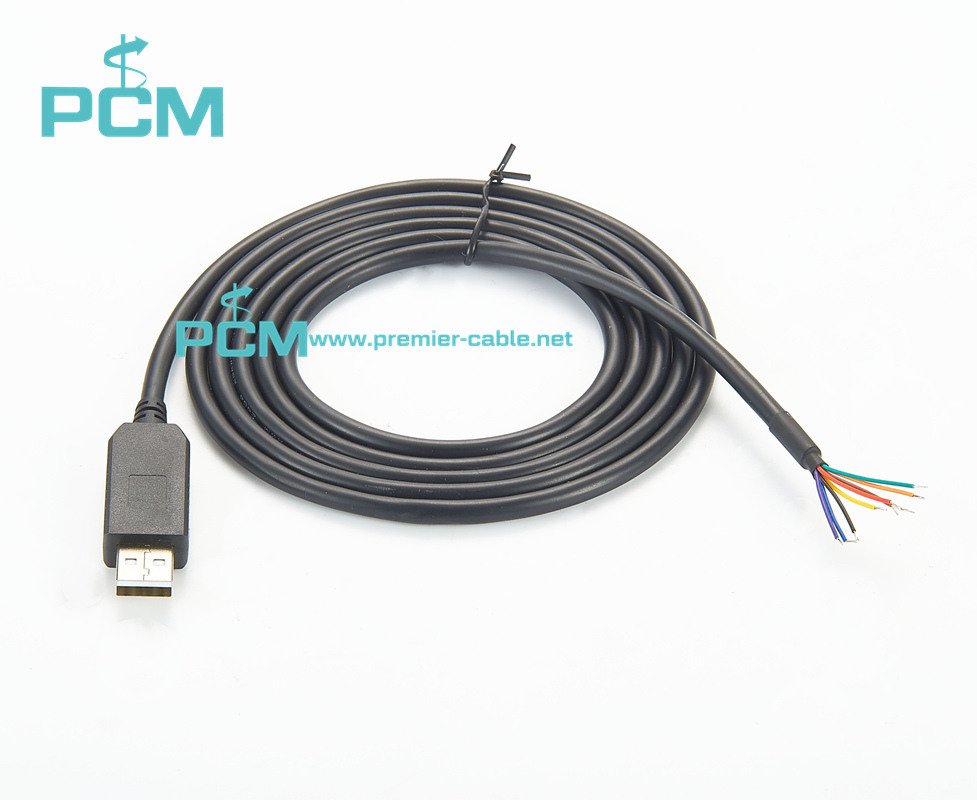 Esperanto
Esperanto
 Shqiptare
Shqiptare
 Euskara
Euskara
 Zulu
Zulu
 Latinus
Latinus
 Cymraeg
Cymraeg
 தமிழ்
தமிழ்
 Slovak
Slovak
 Slovak
Slovak
 Afrikaans
Afrikaans
News Center
What is the difference between RS232 and RS485 and TTL
Publish:
2022-07-04 17:33
Source:
www.premier-cable.net
What is the difference between RS232 and RS485 and TTL
In the IoT industry, as long as you are an embedded engineer, you are generally exposed to the concepts of RS232, RS485, and TTL.
Have you encountered this concept and search for it on Google? Below is a summary of the differences between RS232, RS485, and TTL interfaces.
Electrical Characteristics of RS232 Interface
The voltage of any signal line in RS-232-C is a negative logic relationship. That is: logic "1" is -3 to -15V; logic "0" is +3 to +15V.
The RS-232-C interface connector generally uses a DB-9 plug socket, usually the plug is at the DCE end, and the socket is at the DTE end. The RS-232 port of the PC is a 9-pin socket. The RS-232 interface of some devices connected to the PC, because they do not use the other party's transmission control signal, only need three interface lines, namely "transmit data TXD", "receive data RXD" and "signal ground GND". RS-232 transmission line adopts shielded twisted pair.
Electrical Characteristics of RS485
RS485 adopts the negative logic of differential signal. The logic "1" is represented by the voltage difference between the two lines as -(2~6)V; the logic "0" is represented by the voltage difference between the two lines as +(2~6)V. The interface signal level is lower than that of RS-232-C, so it is not easy to damage the chip of the interface circuit, and the level is compatible with the TTL level, which can be easily connected with the TTL circuit. The maximum data transmission rate of RS-485 is 10Mbps.
TTL level
The TTL level signal is most used because the data is usually expressed in binary format, +5V is equivalent to logic "1", 0V is equivalent to logic "0", which is called TTL (transistor-transistor logic level) signal system, which is a standard technology for communication between parts within a device controlled by a computer processor.
The difference between RS232 and RS485, TTL
1. RS232, RS485, TTL refers to the level standard (electrical signal)
2. TTL level standard Yes Low level is 0, high level is 1 (to ground, standard digital circuit logic).
3. The RS232 level standard is that the positive level is 0, and the negative level is 1 (to the ground, both positive and negative 6-15V can be used, and even a high-impedance state can be used).
4. RS485 is similar to RS232, but uses differential signal logic, which is more suitable for long-distance and high-speed transmission.




Related News
What is a terminal block used for?
While there are many factors to consider when designing an overall system, terminal blocks are an optimal solution for complex electrical system connections. With a variety of color options and configurations, Premier Cable’ terminal blocks offer a range of options to meet your design challenges.
CAN-bus has been widely used in various automation control systems. For example, CAN-bus has incomparable advantages in various fields such as automotive electronics, automatic control, smart buildings, power systems, and security monitoring.
Introduction to M12 connector pin coding
M12 encoding types are A encoding, B encoding, D encoding and X encoding. A-code, B-code and X-code are some of the earliest developed and longest-available M12 connectors. The latest M12 coding types currently under development are K coding for AC and L coding for PROFINET DC.
Cables – What are the correct cable sizes for an NMEA 2000 network?
The three different sizes of NMEA 2000 certified DeviceNet standard cabling are "micro," "mid," and "mini."
What are the advantages of NMEA 2000?
The Premier Cable Starter Kits provide everything you need to get to create a basic NMEA 2000 network from scratch.
The role of DeviceNet terminal resistor
DeviceNet_network is a fieldbus network protocol based on Controller Area Network (CAN). In the DeviceNet network, the terminal resistor plays the role of compensation and protection for signal transmission. The function of the terminal resistor is to eliminate signal reflection and interference and ensure the signal transmission quality.
